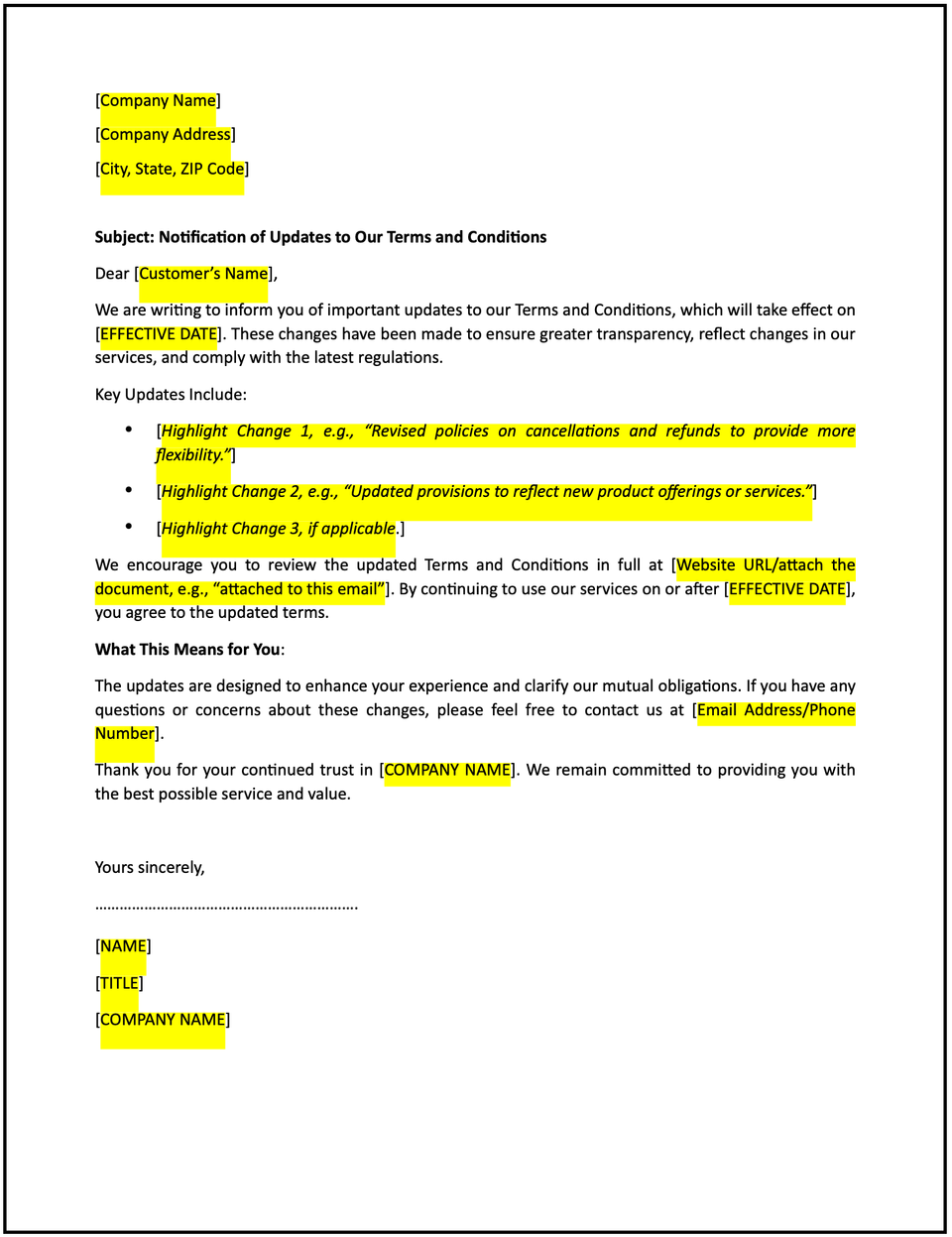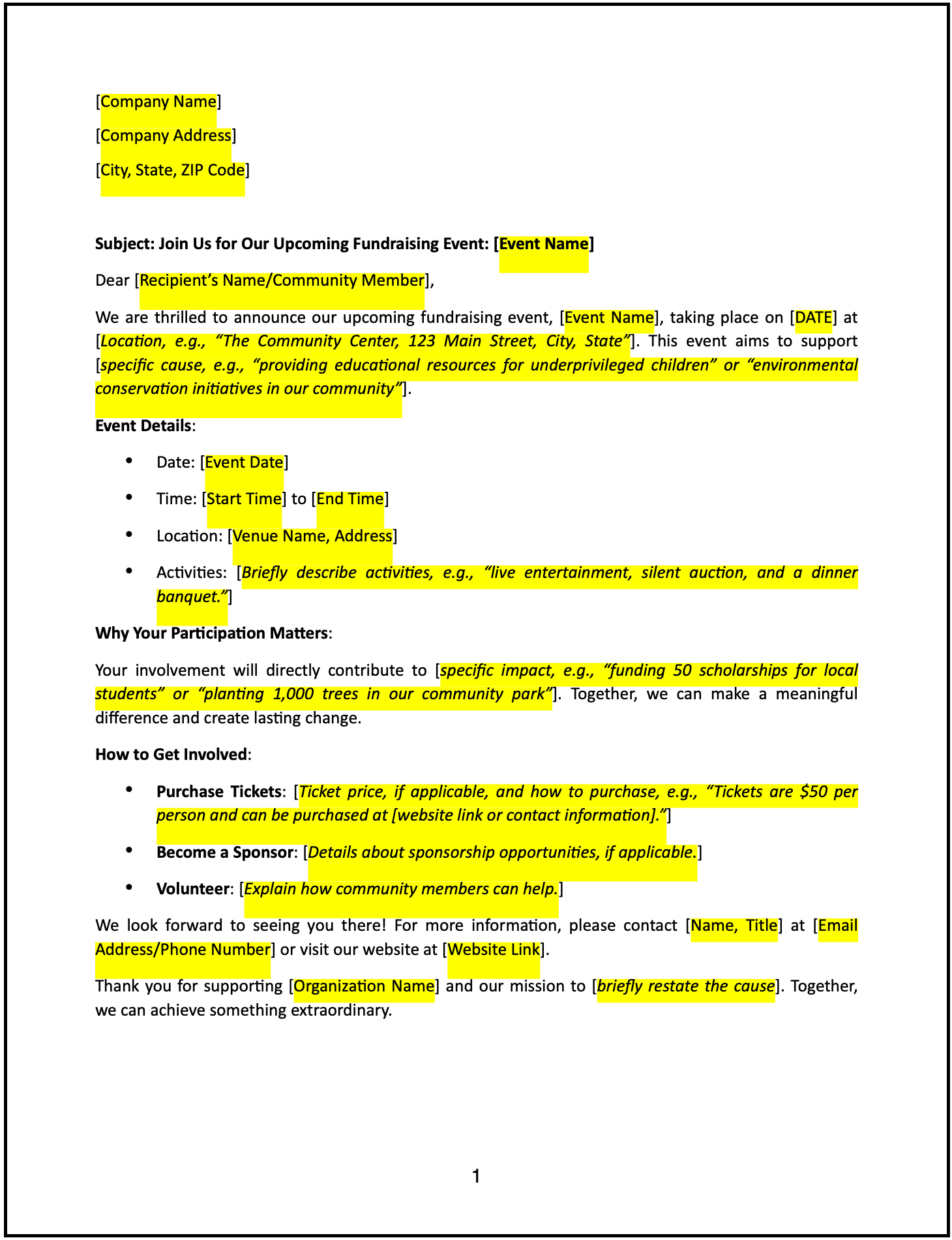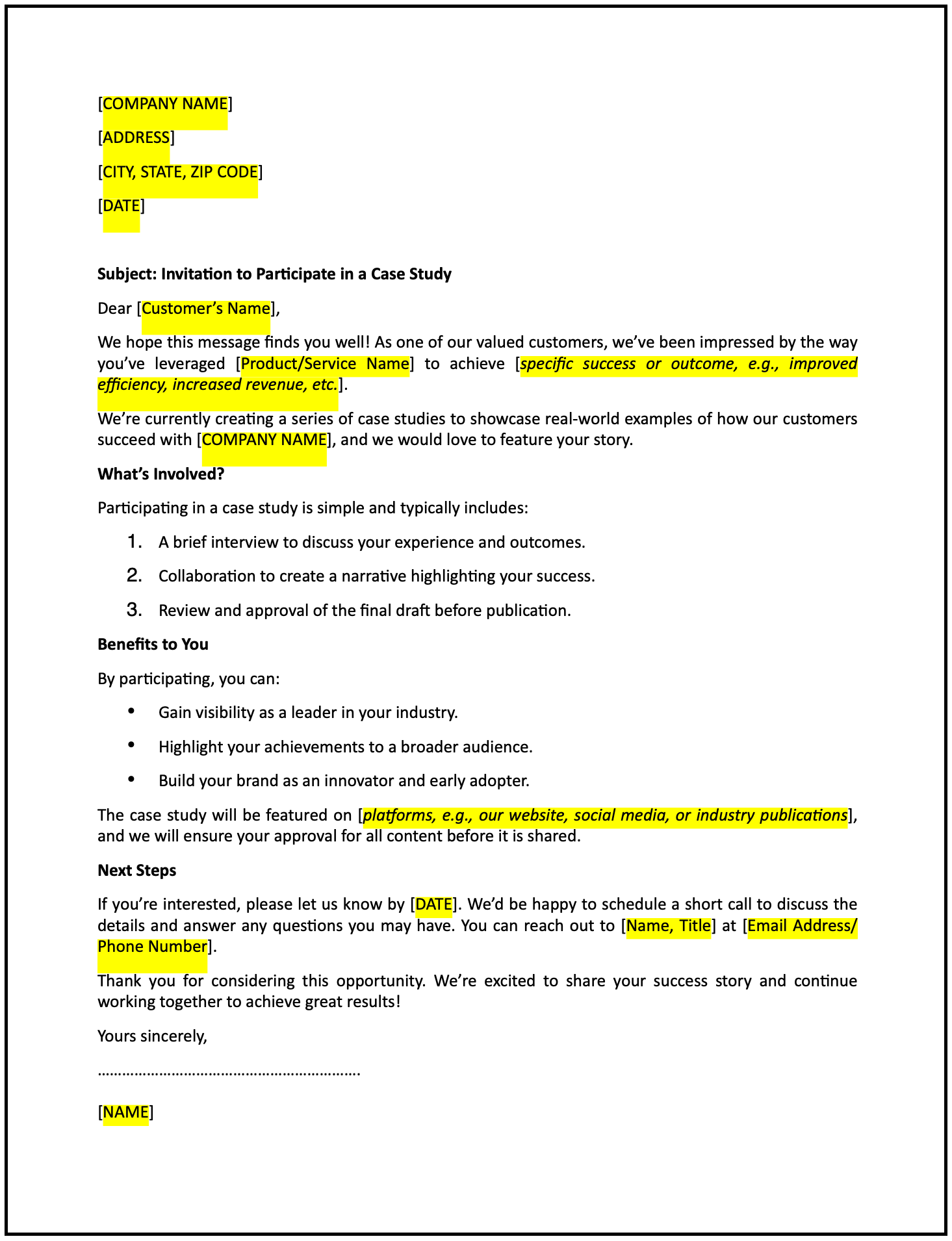Notification letter of updates to terms and conditions: Free template

Notification letter of updates to terms and conditions
Updating terms and conditions is a necessary part of maintaining transparency and ensuring compliance with evolving policies or regulations. This letter provides a professional way to inform customers about the changes, explain their significance, and guide them on reviewing the updated terms.
How to use this notification letter of updates to terms and conditions
- Open with appreciation: Start by thanking the customer for their continued trust and engagement with your product or service.
- Announce the updates: Clearly state that the terms and conditions have been updated and specify the effective date of the changes.
- Summarize key updates: Provide a brief overview of the most significant changes to help customers understand what has been modified.
- Explain the rationale: Share the reasons for the updates, such as legal compliance, improved clarity, or new product features.
- Provide access: Include a link or instructions on where customers can review the full updated terms and conditions.
- Offer support: Encourage customers to reach out with any questions or for clarification about the updates.
- Maintain a professional tone: Ensure the letter is clear, respectful, and customer-focused.
Benefits of using a notification letter of updates to terms and conditions
This letter template ensures a structured and professional way to communicate policy updates while maintaining transparency and trust. Here’s how it helps:
- Promotes transparency: Clearly communicating updates builds trust and demonstrates accountability.
- Enhances understanding: Summarizing key changes ensures customers are informed without overwhelming them.
- Reflects professionalism: A well-crafted notification reinforces your brand’s commitment to clear communication.
- Reduces disputes: Proactively addressing updates minimizes potential misunderstandings.
- Strengthens relationships: Keeping customers informed fosters confidence and loyalty.
Tips for writing an effective notification letter of updates to terms and conditions
- Be specific: Clearly reference the updated terms and conditions and specify the effective date.
- Use professional language: Maintain a respectful and concise tone to ensure clarity.
- Highlight key updates: Focus on the most significant changes to make the letter relevant and informative.
- Provide easy access: Include a direct link or clear instructions for reviewing the full updated terms.
- Keep it concise: Focus on the key points without overloading the customer with excessive details.
Frequently asked questions (FAQs)
Q: What details should I include in this letter?
A: Include a reference to the updated terms, a summary of key changes, the effective date, and a link to the full document.
Q: Should I personalize the letter?
A: While not always necessary, addressing the customer by name can add a personal touch and foster engagement.
Q: Who typically receives this letter?
A: Send the letter to all customers or stakeholders impacted by the updated terms and conditions.
Q: How formal should this letter be?
A: The tone should be professional and straightforward to maintain transparency.
Q: When should this letter be sent?
A: Send the letter in advance of the effective date to give customers time to review and ask questions.
Q: Can this letter include an acknowledgment request?
A: Yes, you can request customers to acknowledge the updates, especially if acceptance is required for continued service.
Q: Is acknowledgment from the customer required?
A: In some cases, acknowledgment is necessary for legal compliance; otherwise, providing contact information suffices for questions.
This article contains general legal information and does not contain legal advice. Cobrief is not a law firm or a substitute for an attorney or law firm. The law is complex and changes often. For legal advice, please ask a lawyer.


